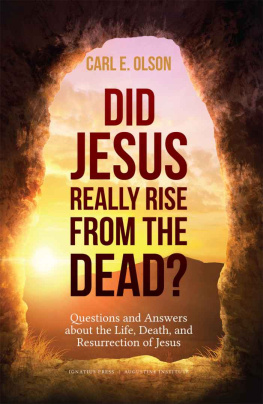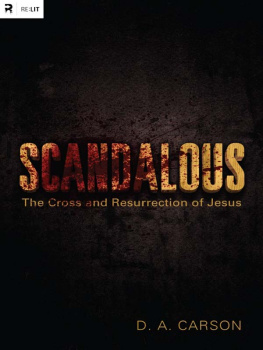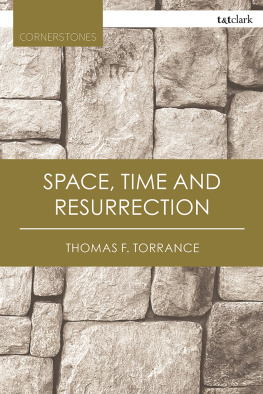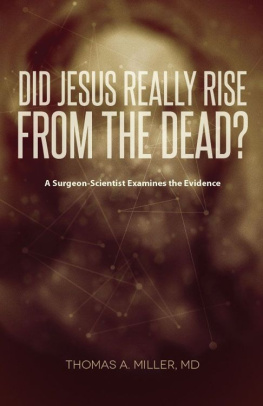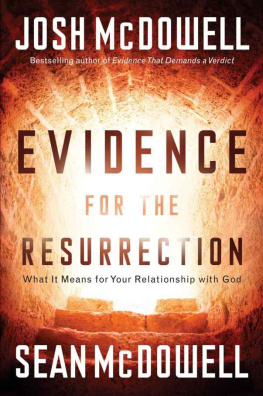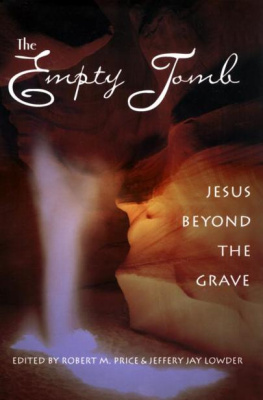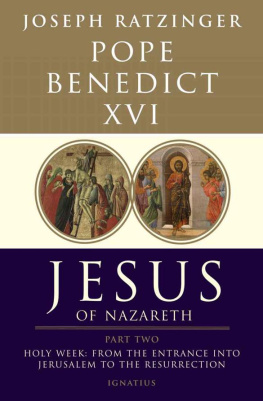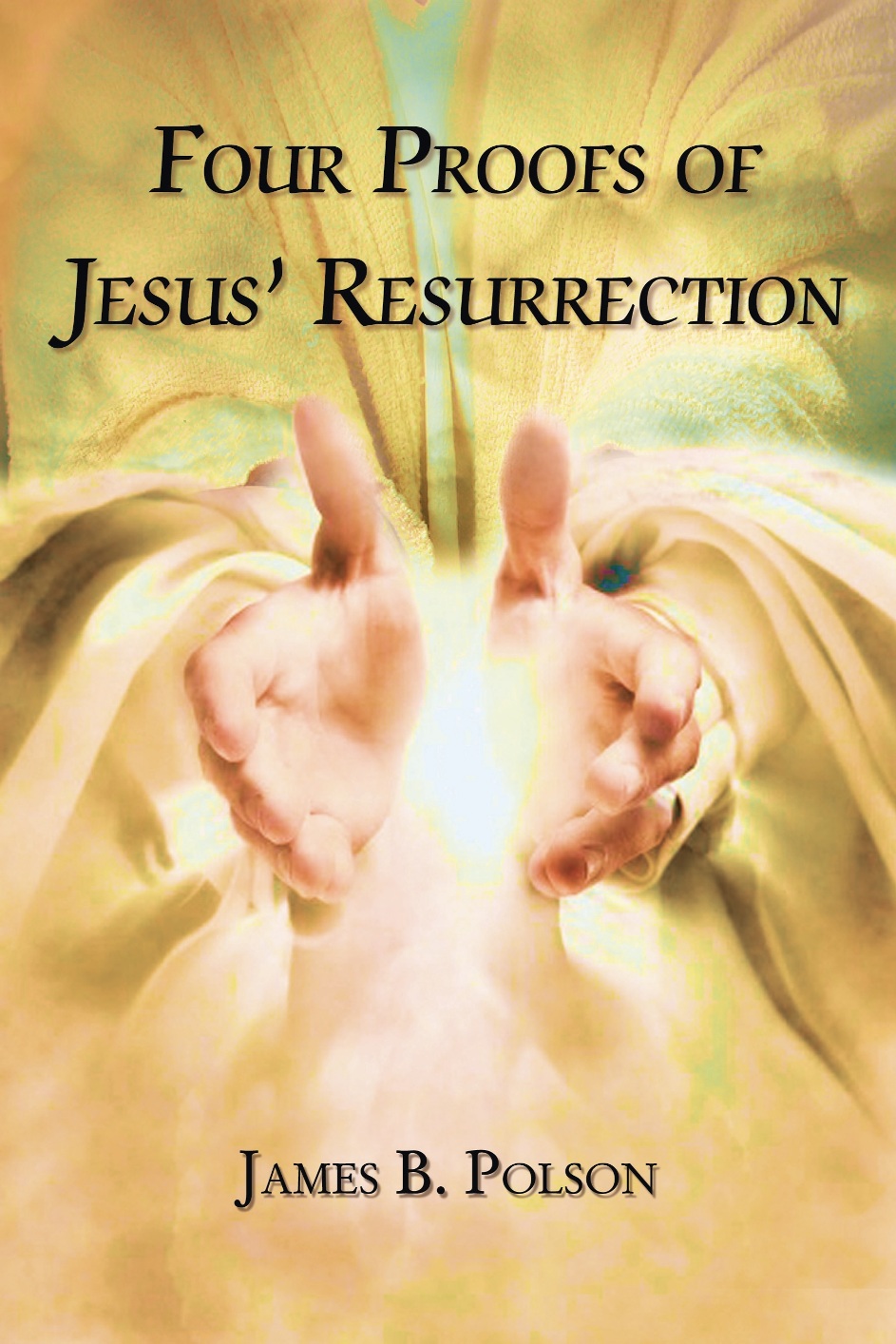FOUR PROOFS OF JESUS
RESURRECTION
FOUR PROOFS OF JESUS
RESURRECTION
James B. Polson

2018 James B. Polson
FOUR PROOFS OF JESUS RESURRECTION
All rights reserved. No portion of this book may be reproduced, stored in a retrieval system, or transmitted in any form or by any meanselectronic, mechanical, photocopy, recording, scanning, or otherexcept for brief quotations in critical reviews or articles, without the prior written permission of the publisher.
Published in Nashville, Tennessee, by Elm Hill, an imprint of Thomas Nelson. Elm Hill and Thomas Nelson are registered trademarks of HarperCollins Christian Publishing, Inc.
Elm Hill titles may be purchased in bulk for educational, business, fund-raising, or sales promotional use. For information, please e-mail .
Library of Congress Cataloging-in-Publication Data
Library of Congress Control Number: 2018945601
ISBN 978-1-595558220 (Paperback)
ISBN 978-1-595558190 (Hardbound)
ISBN 978-1-595558084 (eBook)
Information about External Hyperlinks in this ebook
Please note that footnotes in this ebook may contain hyperlinks to external websites as part of bibliographic citations. These hyperlinks have not been activated by the publisher, who cannot verify the accuracy of these links beyond the date of publication.
A CKNOWLEDGMENTS
T he author thanks his wife, Nancy, his pastor, Ralph Yankee Arnold, and his good friend and brother in Christ, Jay Kominsky, for their valuable advice.
D EDICATION
T his book is dedicated to the countless men and women who pray, give, and labor to present a clear gospel message to those who need to hear it.
C ONTENTS
T he question of whether Jesus rose from the dead is of supreme importance to the Christian faith. If Jesus did not rise from the dead, then Christianity collapses into nothing more than a false religion. But if He did rise from the dead, then His promise to give eternal life freely to all who trust Him as Savior is backed up by the life-giving power of God.
In the Bible, the apostle Paul stated the case like this:
And if Christ be not risen, then is our preaching vain, and your faith is also vain. Yea, and we are found false witnesses of God; because we have testified of God that he raised up Christ: whom he raised not up, if so be that the dead rise not. For if the dead rise not, then is not Christ raised: And if Christ be not raised, your faith is vain; ye are yet in your sins.
(1 C ORINTHIANS 15:1417)
It is common knowledge that when nature takes its course, a person who has been dead for three days does not come back to life. But some have suggested that Jesus did not really die on the day He was crucified. This question was studied by a team of investigators led by Dr. William D. Edwards of the Mayo Clinic. They analyzed the historical records pertaining to Jesus death found in the Scriptures and secular literature. Their findings were published in the Journal of the American Medical Association. Their conclusions are summarized in the following statements found in the abstract of their article:
Accordingly, death resulted primarily from hypovolemic shock and exhaustion asphyxia. Jesus death was ensured by the thrust of a soldiers spear into his side. Modern medical interpretation of the historical evidence indicates that Jesus was dead when taken down from the cross.
Thus, it is clear that Jesus was dead by the time His body was taken from the cross and placed in the tomb. Yet, not much more than fifty days after Jesus crucifixion, Peter boldly proclaimed that He (who had been dead for three days) had risen (Acts 2:1440). Soon after that, both Peter and many other disciples steadfastly preached the resurrection, even in the face of persecution and death. How did they know that their message was true? We know that even misguided men can be passionate about their beliefs. Were the beliefs of these early Christians based on solid evidence and sound reasoning, or were they merely the result of wishful thinking?
Some light is shed on this question by the following statement written by Luke:
To whom [the disciples] also he shewed himself alive after his passion by many infallible proofs, being seen of them forty days, and speaking of the things pertaining to the kingdom of God:
(A CTS 1:3)
Luke is considered a reliable historian, even among many students of history who do not believe that the Bible is the inspired word of God. But does the scriptural record contain any examples of the proofs that Luke wrote about? And would the proofs that the disciples encountered convince a fair-minded person? The purpose of this book is to examine these questions in the light of the historical record contained in selected passages of the New Testament.
T he first line of evidence involves the appearance of the grave clothes left in the tomb after Jesus body was gone. The following passage tells of the discovery of the clothes by Peter and John.
The first day of the week cometh Mary Magdalene early, when it was yet dark, unto the sepulchre, and seeth the stone taken away from the sepulchre. Then she runneth, and cometh to Simon Peter, and to the other disciple [John], whom Jesus loved, and saith unto them, They have taken away the Lord out of the sepulchre, and we know not where they have laid him. Peter therefore went forth, and that other disciple, and came to the sepulchre. So they ran both together: and the other disciple did outrun Peter, and came first to the sepulchre. And he stooping down, and looking in, saw the linen clothes lying; yet went he not in. Then cometh Simon Peter following him, and went into the sepulchre, and seeth the linen clothes lie, And the napkin, that was about his head, not lying with the linen clothes, but wrapped together in a place by itself. Then went in also that other disciple, which came first to the sepulchre, and he saw, and believed. For as yet they knew not the scripture, that he must rise again from the dead.
(J OHN 20:19)
Merrill C. Tenneys description of the ancient burial custom was quoted by Josh McDowell as follows:
In preparing a body for burial according to Jewish custom, it was usually washed and straightened, and then bandaged tightly from the armpits to the ankles in strips of linen about a foot wide. Aromatic spices, often of a gummy consistency, were placed between the wrappings or folds. They served partially as a preservative and partially as a cement to glue the cloth wrappings into a solid covering....
The tightly wrapped strips of linen, cemented into place by the gummy spices, would have formed a stiff casing around the body, like a whole-body cast. The body of Jesus had apparently just vanished, leaving the casing empty but intact. I think that when John first glanced into the dimly lit tomb and saw the grave clothes, his impression was that the body was still there. Therefore, he turned his attention to questions outside the tomb. That is, who moved the stone and why? Of course, John did not see the body itself but only the intact grave clothes. But it would have been easy to assume that the body was still inside the clothes, since they would have retained the shape of a body covering.
The narrative then tells of Peters entry into the tomb. But the description of what Peter saw is different from the description of what John saw. It says that Peter saw the linen clothes lie, and the napkin, that was about his head, not lying with the linen clothes, but wrapped together in a place by itself. Upon Peters inspection, which was closer than that of Johns, he saw the napkin laid aside from the rest of the clothes. He could look inside the casing that had been wrapped around the body and see that it was empty.




